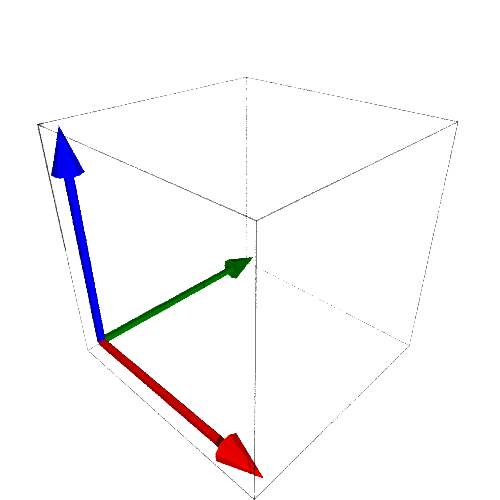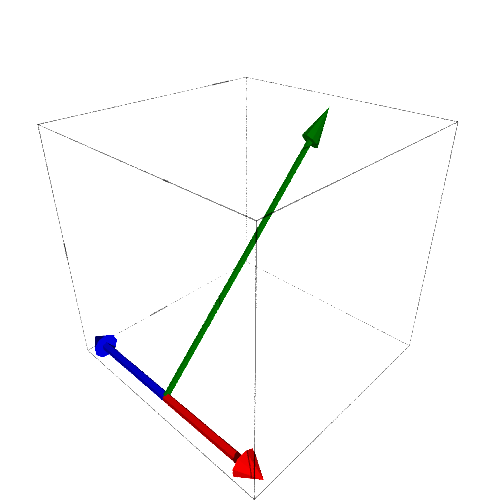Section 3.3 Linear Maps and Matrices
Subsection 3.3.1 Matrices as Maps
Investigation 3.3.1.
Let
We can "quickly" verify that A(2→v+→w)=2(A→v)+A→w:
What is true, though perhaps not immediately obvious, is that this doesn't depend on the values of A, →w, or →v.
Theorem 3.3.1.
If A is an n×m matrix, →v,→w∈Rm, and a,b∈R, then
that is, multiplication by a matrix is a linear transformation.
Investigation 3.3.2.
The previous relationship works both ways. Define T:R3→R2 by
If we apply this to each element of the elementary basis E3 for R3 we get:
But, this is the same as multiplying each of the vectors by the matrix
in which each column is the image of one of the elementary vectors.
Theorem 3.3.2.
If T is a linear transformation from Rm to Rn, then it may be represented as multiplication by
in which each column is the image of one of the elementary basis vectors for Rm.
Subsection 3.3.2 Row, Column, and Null Spaces (again)
permalinkThe row, column, and null spaces for the matrix
permalinkare
permalinkWe can see these visually in Figure 3.3.3 where you can see the plain of the row space transition to the plain of the column space while the vector of the null space transitions to zero.

permalinkIf we multiply each of the standard basis elements by the matrix A we get
permalinkwhich are the columns of the matrix. The domain of the transformation defined by A is therefore \mathbb{R}^3\text{,} Figure 3.3.4. Meanwhile, the image (or range) of the transformation is the column space of A which is a copy of \mathbb{R}^2\text{,} Figure 3.3.5. So the basis for \mathbb{R}^3 has been turned into a basis for a plain that is a copy of \mathbb{R}^2\text{.} 1 This is the perspective that we will spend time on in Section 3.4.


permalinkWe can also define a linear transformation T_A algebraically by
permalinkwhich has the same effect as multiplying the vector \left\lt x,y,z\right\gt by A\text{.}
permalinkWe have three ways to think of each transformation. Each transformation is a manipulation of a physical space, a change from one basis to another, or a series of algebraic instructions. All of these are reasonable ways to view a transformation and which perspective we use depends on what we wish to accomplish.